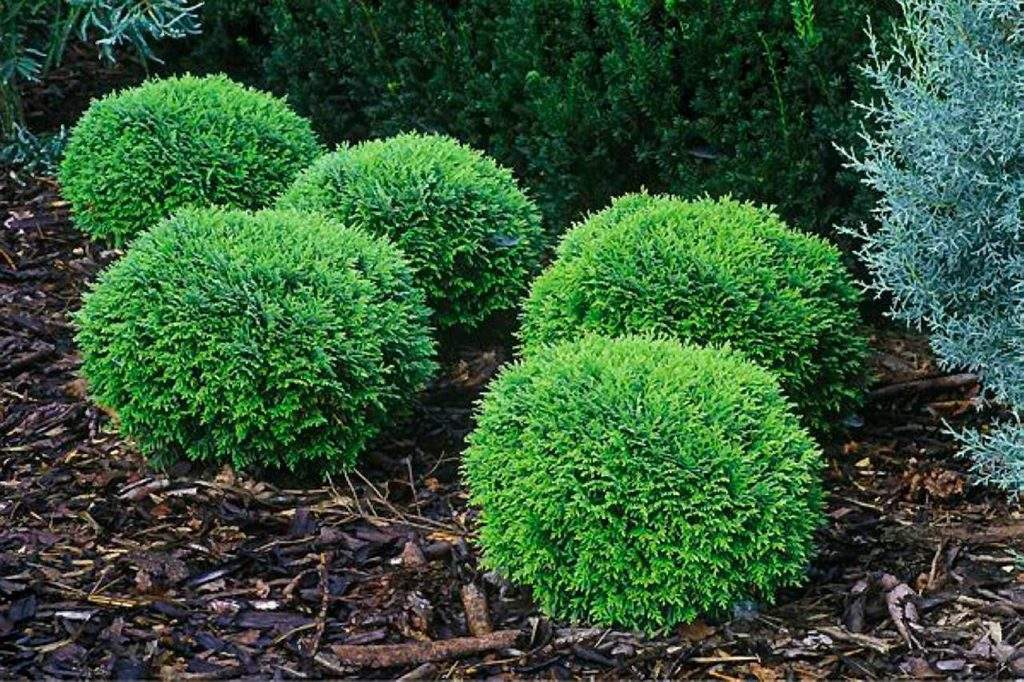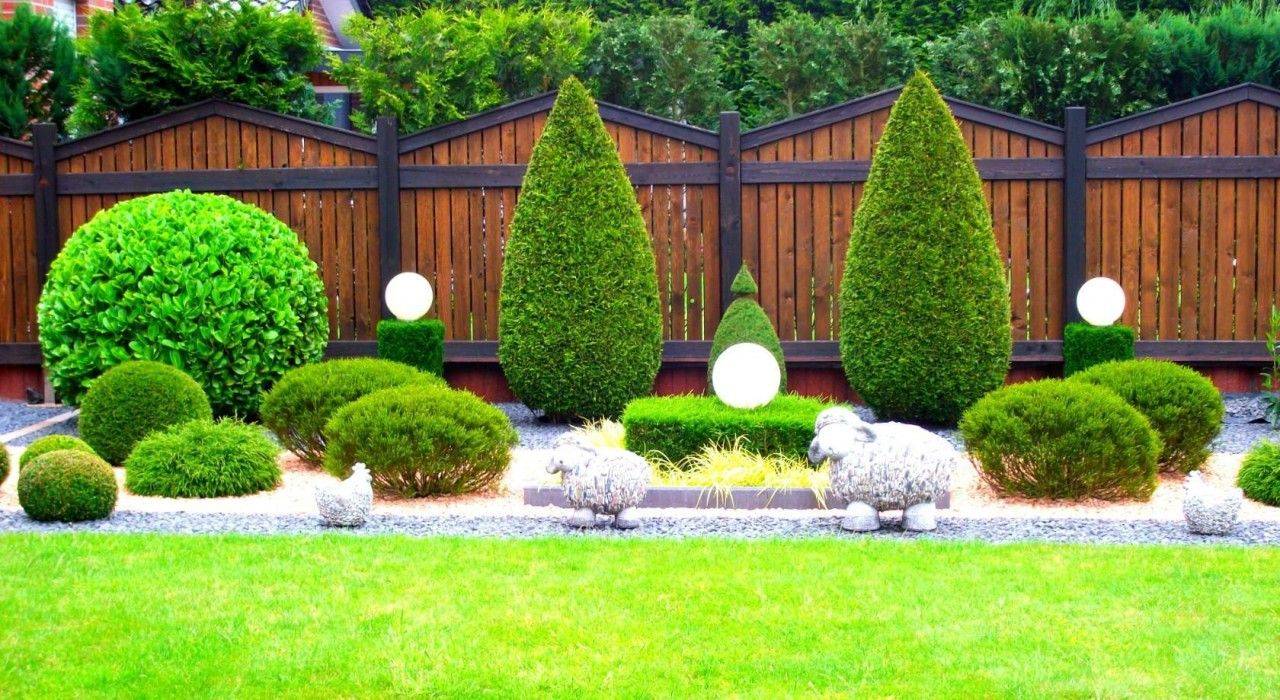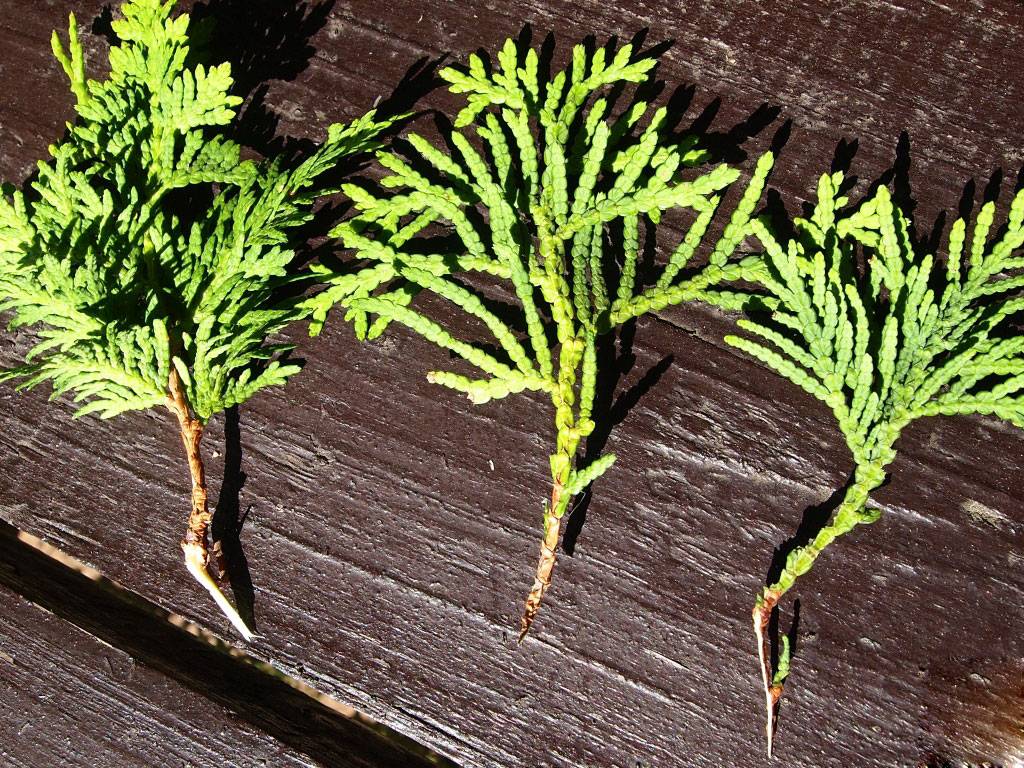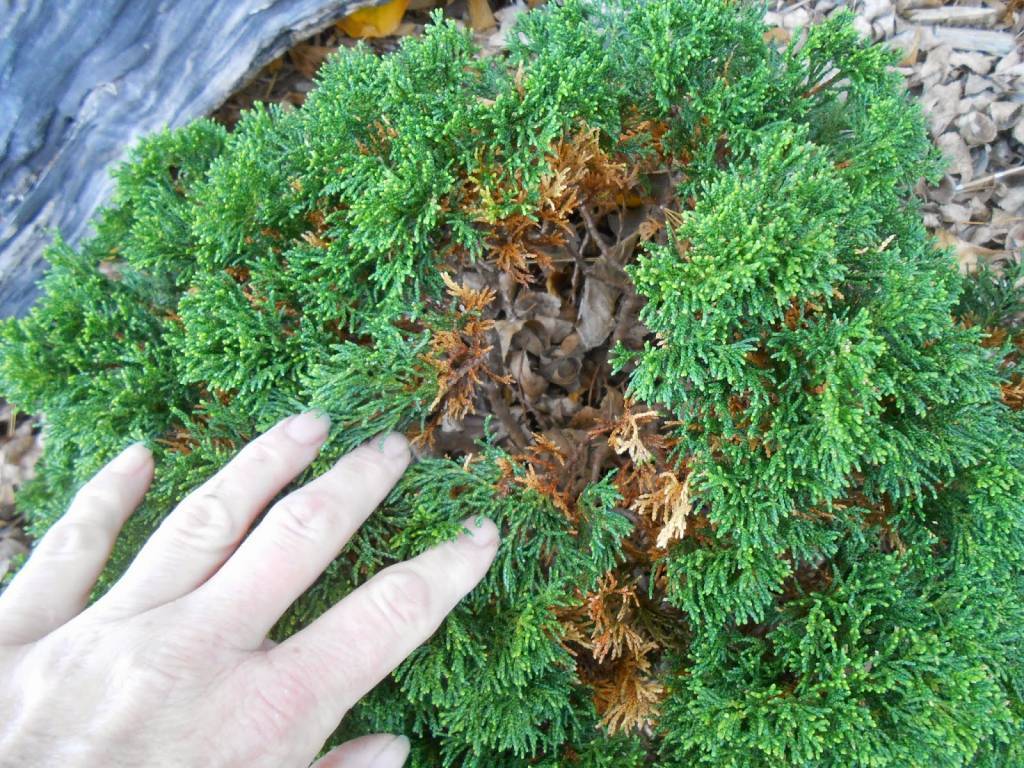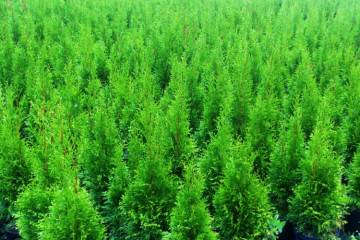Thuja Hoseri (Hoseri) western spherical - description
Content:
Spherical dwarf thuja are irreplaceable plants for a small area. They are beautiful, unpretentious in care, grow slowly. Skillfully combining conifers in a garden design, you can turn your home area into a corner for relaxation. One of the dwarf spherical thuja is thuja western Khozeri, information on the cultivation of which is presented below.
Thuja Hoseri (Hoseri) western spherical - what kind of plant is it
The variety was bred by Polish specialists. With the help of a low-growing thuja, you can completely transform the landscape design of a garden plot. Craftsmen easily transform the crown of bushes into interesting figures.
Description
The height of thuja Khozeri does not exceed 80-100 cm. The bush grows in the form of a ball, but with age, the crown can change to ovoid. The plant spreads up to 1.2 m wide.
The needles are green in summer, and in autumn they acquire a bronze color. In this form, the thuja waits out the winter. In the spring, the color of the needles returns, and the thuja again pleases with a decorative look.
How fast it grows
The trunk of the Hoseri thuja grows slowly. The annual growth is 5 cm. By the age of 10, the bushes reach a height of 60-80 cm, then their growth slows down. Due to the slow development of the crown, it retains a spherical crown, so it can not be cut at all.
Planting and leaving
Thuja can be planted in open ground in spring and autumn. In the northern regions, planting is best done in the spring, so that the bushes can take root well and not suffer from winter frosts.
How to plant
Conifers are planted in a well-lit area. But the plant will not lose its decorative effect when grown in partial shade. The landing site should not be blown by cold winds.
The substrate is selected loose, fertile. It is prepared from turf, peat, sand. If there is no way to mix the soil mixture on your own, you can buy soil for conifers at a flower shop.
The procedure for planting thuja Hoseri is performed as follows:
- Dig a hole 80 cm deep and 60 cm wide.
- Drainage is laid out on the bottom with a layer of 4-6 cm.
- Half of the pit is filled with prepared soil.
- A seedling is placed in the middle.
- The plant is covered with a substrate in such a way that the root collar is at ground level.
After that, the thuja is watered abundantly. To preserve moisture in the soil, the root circle can be mulched with tree bark.
Watering mode
Conifers need frequent watering immediately after planting. The procedure is carried out as soon as the topsoil begins to dry out. A bucket of water is poured under each plant.
Thuja is usually watered once a week. If there are heavy rains in the summer, the amount of irrigation is reduced or irrigation is canceled altogether. The procedure is carried out in the morning or in the evening. Periodically, thuja Hozeri needs to arrange sprinkling, after which the crown is cleared of dust, it looks more decorative.
Top dressing
If thuja Hozeri is planted in fertile land, they begin to feed it only in the 3rd year. Then the bushes are fertilized in spring and autumn. Top dressing in the spring helps the plant recover from frost, start growing.
The introduction of potassium-phosphorus fertilizers in the fall contributes to the successful wintering of shrubs. By spraying the needles in the summer, you can carry out foliar feeding.
Features of summer care
Caring for plants in summer consists in watering, removing weeds from the near-trunk circle, and loosening the soil. The bushes do not need pruning. Only dry shoots that have turned yellow for some reason are cut off.
If, as a result of heavy rains, water has accumulated in the near-trunk circle, a groove is made to drain it. Gardeners who want to breed thuja can harvest seeds from it in August.
Preparing for winter
With the onset of cold weather, the bushes are watered abundantly. If the root system is moistened, it will tolerate frost more easily. The trunk circle is mulched. Adult bushes do not need shelter.
For young plants, a frame is prepared, which is then covered with an air-permeable material. The procedure is carried out after stable frosts come. In early spring, the shelter is removed, otherwise the root system may undergo damping.
Reproduction
Thuja Khozeri can be propagated by seeds or cuttings.
Seeds
This method is rarely used by gardeners as it is time consuming and time consuming. The seeds are harvested in late summer or autumn. They are planted immediately in the ground or first in boxes.
When planting in a container, the seed is buried 1 cm with an interval of 5 cm.If the seeds are planted directly into the ground, the distance between them is left 30 cm.
Cuttings
Vegetatively, the western thuja Hoseri is propagated in the spring. To do this, cuttings with a length of at least 10 cm are torn from the mother plant.Planting is carried out as follows:
- Sections of cuttings are dusted with a growth enhancer, for example, root.
- Drainage is poured into the box, then a substrate consisting of turf, peat, sand.
- Shoots are planted at a distance of 4-5 cm from each other and at a distance of 8-9 cm between rows.
- The earth is watered, lightly tamped.
- Cover with plastic wrap so that it does not touch the cuttings.
Under these conditions, rooting will occur faster. Every day the shelter is removed for a few minutes, wipe it and the container from condensation. Otherwise, the seedlings may be affected by fungal diseases. After 2-4 months, roots will appear on the cuttings. Rooted plants are transplanted into separate containers.
Why do the needles turn yellow
The yellowing of needles can occur for several reasons:
- thuja changed color in the fall, this is a natural process. In spring, the color of the plants will be restored;
- lack of moisture in the soil. In summer, in dry weather, water is abundantly watered at least once a week. In addition, the crown is periodically sprinkled;
- excess moisture in the soil. Water the thuja after the top layer of the earth begins to dry out. When landing in a pit, drainage is poured from stones, broken bricks, expanded clay;
- sunburn. It can happen in early spring. Therefore, during this period, the crown is covered with a white, breathable material;
- defeat by fungal diseases. Infestation can occur from nearby weeds, as well as from lawn grass. For prophylaxis, the crown is sprayed with antifungal drugs in the spring;
- invasion of pests. Due to the appearance of harmful insects in thuja, the needles can also begin to turn yellow and dry. In the spring, in addition to fungicides, the crown is sprayed with insecticides.
Thuja globular Hoseri is beautiful and unpretentious in care. It can be planted against the background of deciduous or ornamental flowering shrubs. Thuja will look beautiful next to columnar low conifers. Having planted thuya Hoseri, with some care, the gardener will be able to transform the area around the house beyond recognition.
